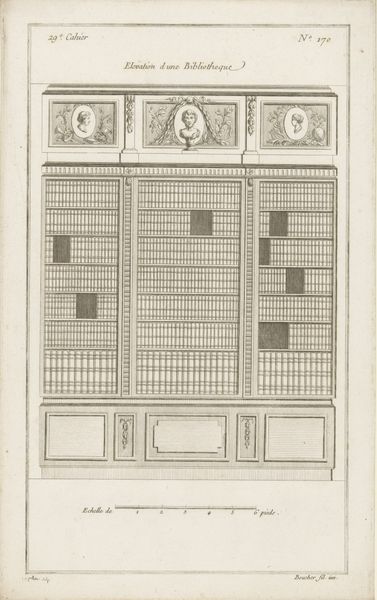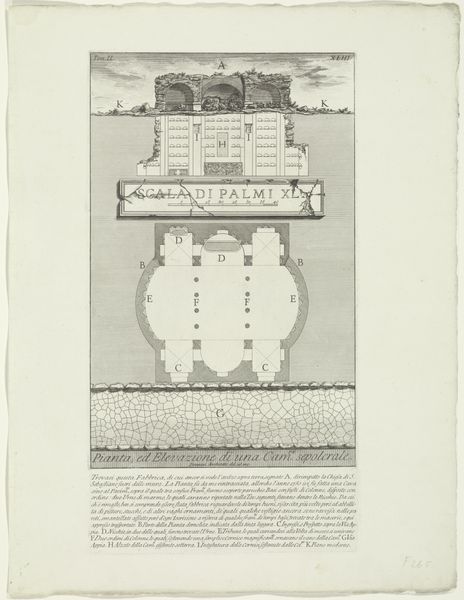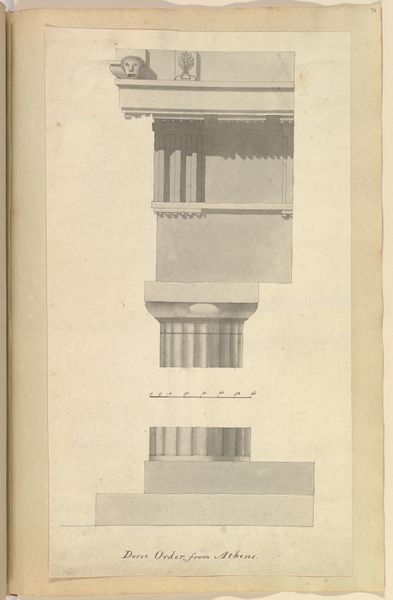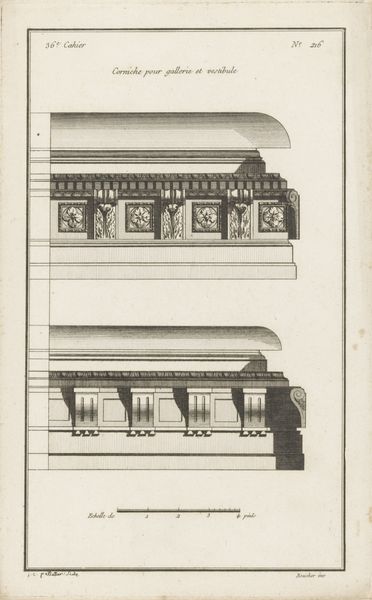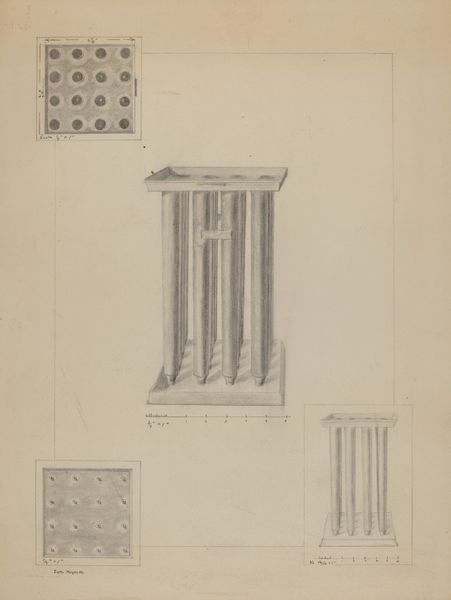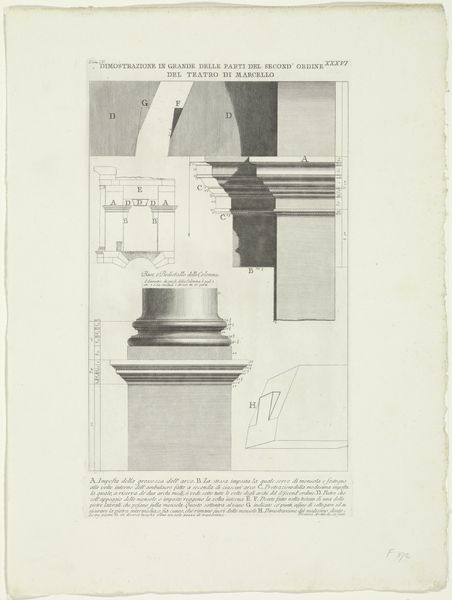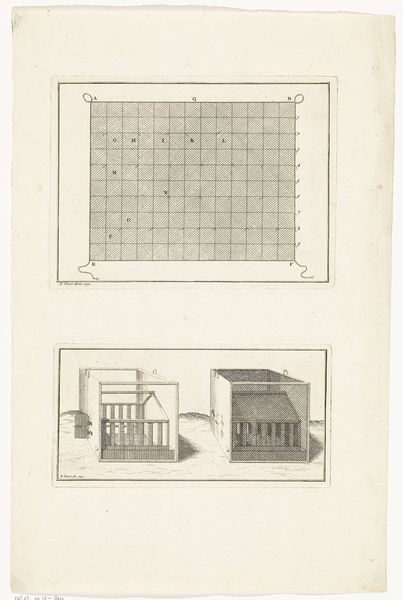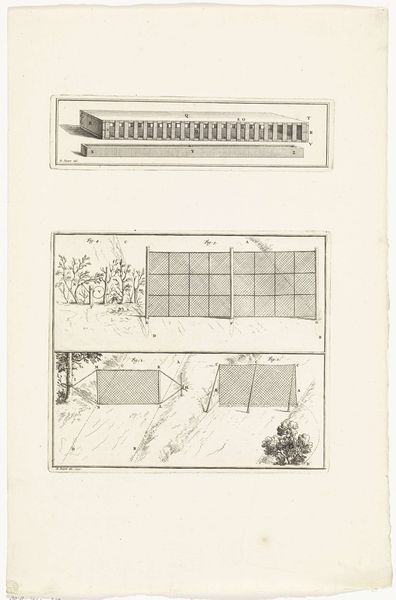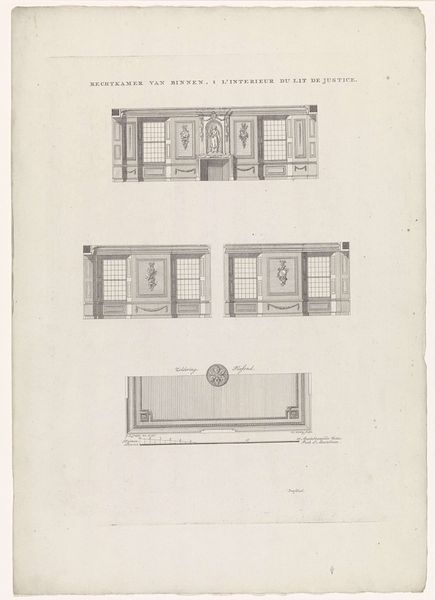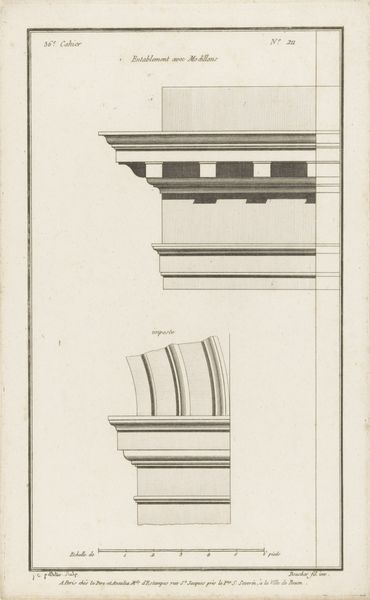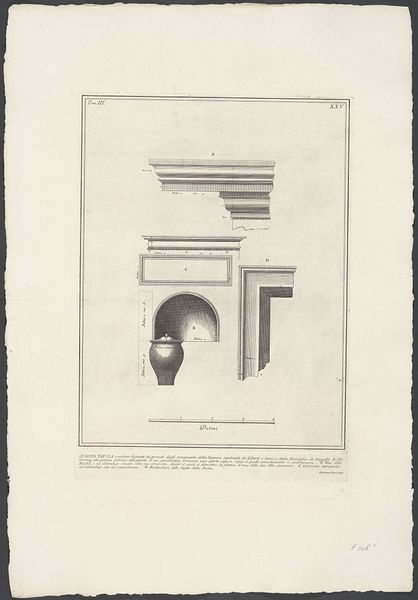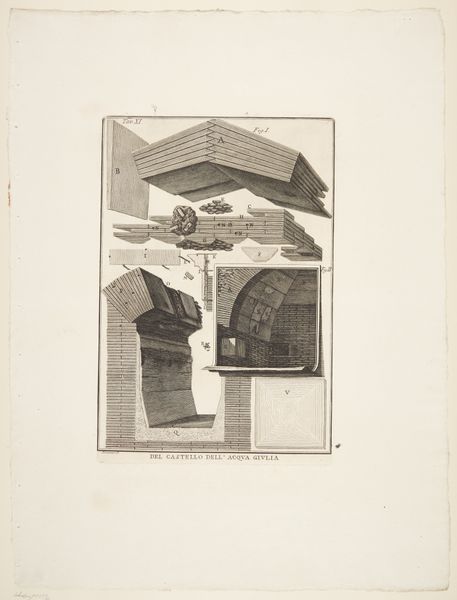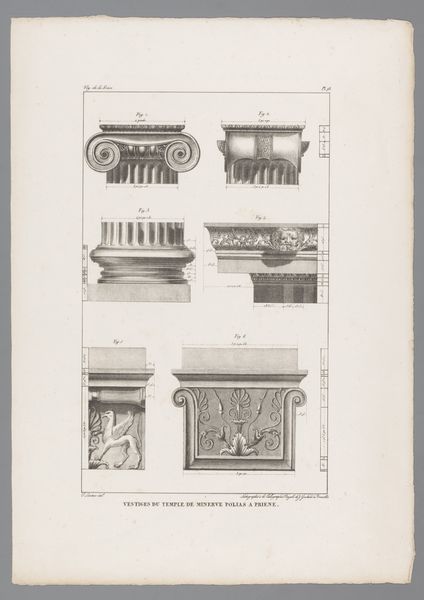
Dimensions: height 404 mm, width 271 mm
Copyright: Rijks Museum: Open Domain
Giovanni Battista Piranesi made this print of a water reservoir at Castel Gandolfo using etching, a printmaking technique dependent on both acid and human skill. Piranesi deployed metal tools to inscribe an image onto a copper plate, which was then submerged in acid. The acid would bite into the exposed metal, creating lines that hold ink. This plate, when pressed against paper, produces the image we see. This process allowed Piranesi to create incredibly fine and detailed lines, capturing the texture and scale of the architecture with remarkable precision. Printmaking was essential to circulating architectural ideas in the 18th century. Through careful observation and meticulous craft, Piranesi recorded the details of this ancient structure, transforming a functional water reservoir into a compelling work of art. It challenges us to consider the value we place on design and documentation.
Comments
No comments
Be the first to comment and join the conversation on the ultimate creative platform.
